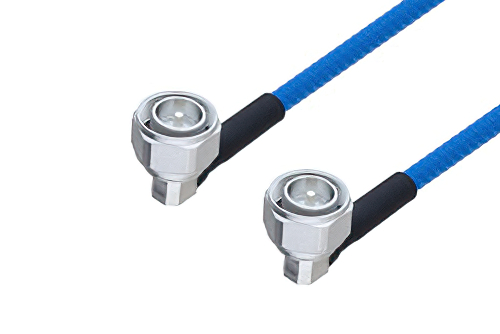
Plenum rated coax cable
It is important for any installer, communications technician, and acquisition personnel to understand the purpose of “fire rated cables”, as lives are literally on the line. In the United States, the National Fire Protection Association (NFPA) outlines standards for in-building electrical wiring that are located in the National Electrical Code (NEC). Though the NEC isn’t universal throughout every state and local governmental body in the United States, adoption of NEC is widespread, and a good rule-of-thumb for all installs. There are over 15 cable rating levels, but those that are most relevant to coaxial cable assemblies used for communication are the Communications Multipurpose (CM), Communications Multipurpose Riser (CMR), and Communications Multipurpose Plenum (CMP).
CMP cables are what are commonly referred to as “Plenum” cables. The Plenum is the space above a ceiling, below a floor, behind a wall, etc., that are used for air circulation. Ductwork is also considered a Plenum space, as there is an actively moving area that is being circulated through that area to other parts of the building. Plenum spaces are necessary for proper ventilation, but also pose an extreme hazard to occupants of a building, because these spaces are able to conduct toxic fumes and smoke while also spreading fires. This is because for Plenum spaces to work, there can’t be fire breaks blocking the flow.
Hence, for Plenum spaces, NEC requires Plenum rated coaxial cabling. Plenum cabling is typically constructed of low fume/smoke/toxicity polymers and coated with a flame retardant to prevent combustion in the first place. The concept here is that a less flammable and dangerous cable in a Plenum space will result in less overall harm and potential to spread the fire, than a cable that isn’t rated not to burn as fiercely or release toxic gasses that may in turn be combustible.
There are a variety of ways for a coaxial cable to meet Plenum ratings. One is as described above, but a coaxial cable may also be built with a dielectric that is “naturally” Plenum, such as PTFE/Teflon. Because of this specialized construction, Plenum rated cables tend to be more expensive than non-plenum cables, and this is why Plenum cables aren’t used throughout the entirety of an install. However, if there is a doubt that a space may be Plenum, it may be worth seeking additional guidance or taking the cautious approach as using a Plenum rated cable to prevent future accidents and potential damage to a building or loss-of-life.




 Pasternack Blog
Pasternack Blog
